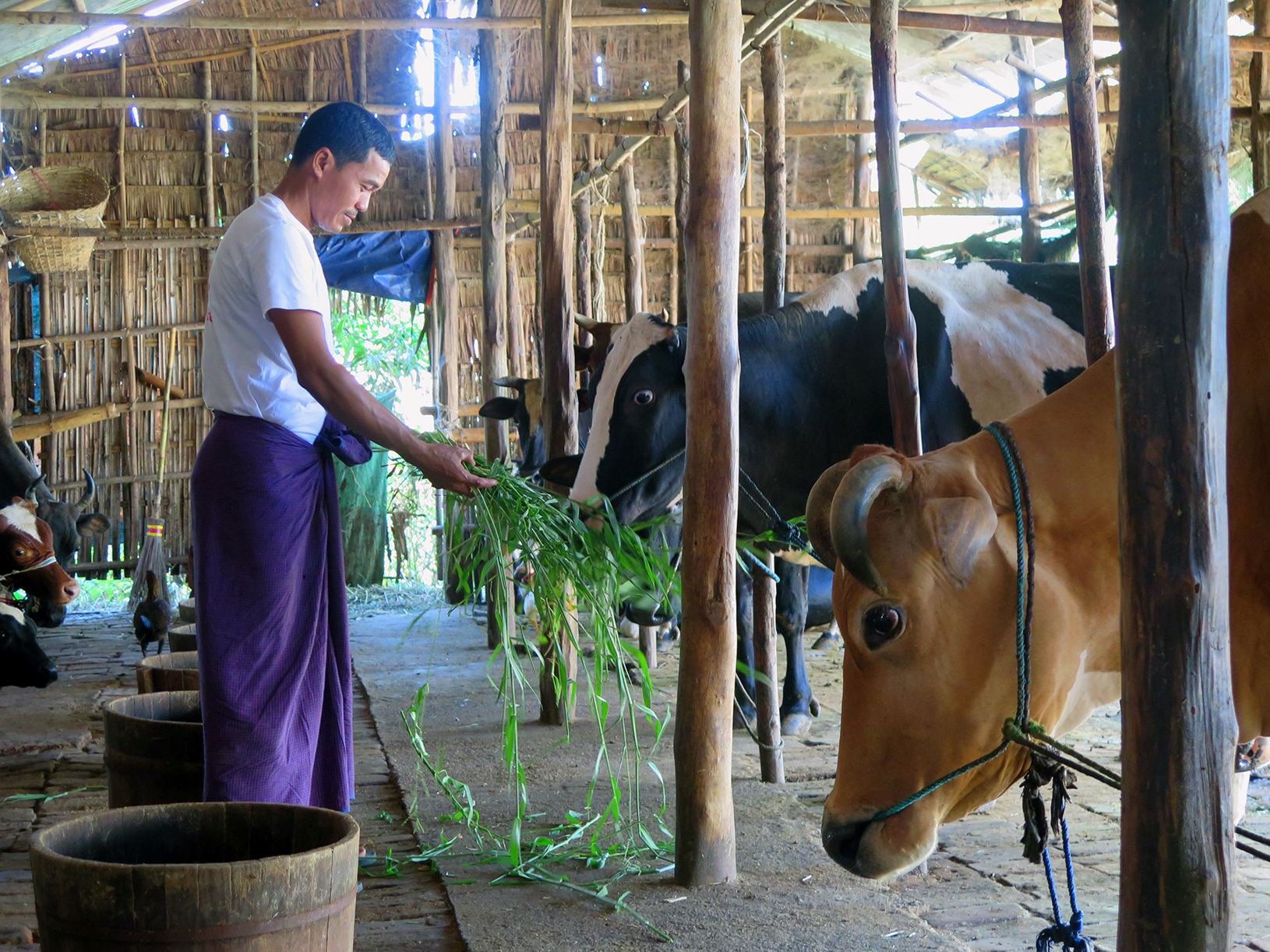
If you would like to learn more about the IAEA’s work, sign up for our weekly updates containing our most important news, multimedia and more.
Nuclear-derived techniques help farmers combat lumpy skin disease outbreaks in Asia
Michael Madsen

Once limited to Africa, lumpy skin disease has over the past four years appeared for the first time in various parts of Asia and Europe. Its vectors in Asia are not yet fully understood. (Photo: Miklos Gaspar/IAEA)
Over the past four years, a disease once limited to the hot and humid climates of Africa has appeared for the first time in various parts of Asia and Europe. Afflicting cattle with a debilitating and sometimes deadly condition, the rapid spread of lumpy skin disease is as mysterious as it is alarming.
Laboratories of the IAEA and the Food and Agriculture Organization of the United Nations (FAO) are supporting Asian countries in diagnosing lumpy skin disease and identifying different genetic strains of the disease. This is a prerequisite to launching an effective response to this animal disease pandemic.
According to the FAO, the disease causes significant economic losses for farmers, while creating costs to authorities for preventive and control measures. The FAO estimates that the lumpy skin disease outbreak in the Balkans in 2016–2017 directly cost affected countries more than €20 million in vaccinations, compensation for culled and dead animals, and aerial fumigation. The economic impact of this much wider Asian outbreak is yet to be quantified.
Tracking the spread
Named after the characteristic lesions that form on the skin of infected cattle, how lumpy skin disease is spread is only partially understood. Previous outbreaks in Africa and the Middle East have identified different species of flies as vectors, but the movement of infected animals and contaminated animal products, such as semen or milk, are also transmission suspects.
“We need to carefully re-look at what the vectors are for this disease. We have some understanding of how it has spread in Africa. We have a weak idea of what the vectors are in Europe, but we are at a total loss as to what vectors are causing its spread in Asia,” said Giovanni Cattoli, Head of the Animal Production and Health Laboratory of the Joint FAO/IAEA Centre of Nuclear Techniques in Food and Agriculture. The laboratory team is in direct contact with laboratories, researchers and veterinary authorities in Bangladesh, Bhutan, Cambodia, Indonesia, Nepal, Mongolia, Myanmar, Sri Lanka, Thailand and Viet Nam, trying to help them understand the origins and spread of the virus causing lumpy skin disease using the nuclear-derived polymerase chain reaction technique — the same method that is used worldwide to identify and analyse COVID-19.
Based on the list of countries most affected, the virus may have travelled from North Africa into the Middle East and Europe, including the Russian Federation. It then unexpectedly emerged in China and South Asia. Overall, the virus has spread across numerous climates and it is unclear how such a spread could happen over such a short period.
“The virus is spreading very fast — much faster than expected. It emerged in China for the first time in 2019, and, after just a year, we already have more than one strain of the virus in Asia,” explained Cattoli.
Global travel restrictions imposed under the pandemic, however, have obliged the IAEA to adapt its support in response to the outbreak. When lumpy skin disease first appeared in Bulgaria in 2016, experts were able to travel there to conduct outbreak investigations. This time, Cattoli and his team collaborate online with counterparts in affected Asian countries to give emergency support in the form of equipment, reagents and consumables, and to investigate the outbreaks and analyse the samples submitted to the FAO–IAEA laboratory in Austria. Through the Veterinary Diagnostic Laboratory (VETLAB) Network, laboratories in Asia can share data and results in near real time, and the FAO–IAEA laboratory team can provide comments and suggestions immediately on how countries can improve their procedures.
The right response
A quick response to the virus, which includes culling, vaccination and movement restriction, is critical to getting the spread of the virus under control. When the virus broke out in Europe, culling was initially used, but this was not popular with farmers. Vaccination and movement restrictions ultimately managed to eliminate the virus in the region, but it remains to be confirmed how effective existing vaccines would be against the emerging Asian strains.
“Making sure you have the appropriate vaccine is very important for saving money and being effective — using an inappropriate vaccine for the virus variant could exacerbate the problem,” said Cattoli, explaining that a less than optimal vaccine could lead to new strains evolving and furthering the duration and spread of the disease. The IAEA is working with the FAO’s regional office in Thailand to support Asian countries with quality assurance and ensure vaccines are effective against the virus strains present there.
Inaction could lead to dire economic consequences. Lumpy skin disease is a listed disease with the World Organisation for Animal Health (OIE), so if there is an outbreak in one country, then export of cattle could stop. Furthermore, it is a disease that compromises rural societies and villages the most. “They have few animals and can be especially dependent economically and for nutrition on animal products like milk. In these already difficult times, this additional virus is a heavy burden to bear,” said Cattoli.

